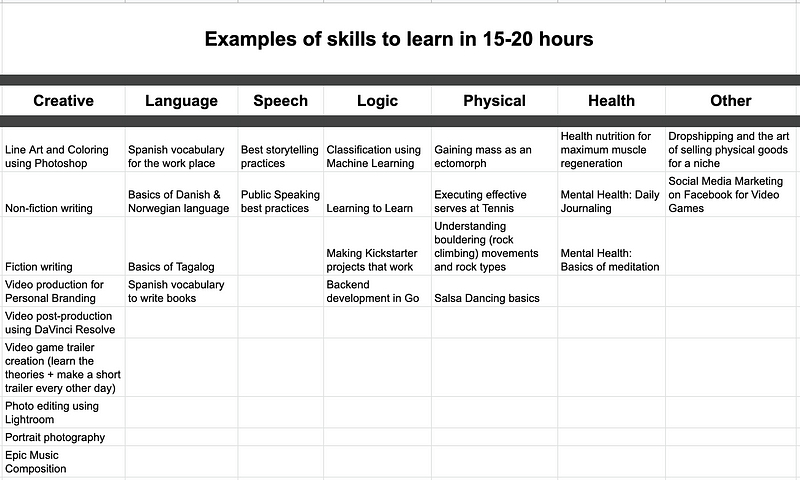The most concise yet complete guide on skill development
After deliberately learning 40+ news skills in the past 14 months, I uncovered varied ways to make learning new skills enjoyable, useful, and most importantly, life changing.
Here’s the one thing you should know right away: It’s not as scary or as hard as it seems. I’ll show you the best ways I’ve learned to learn new skills, all in this article.
A lot of us learn a bunch of new skills on a regular basis, without thinking much about it. Learning a new skill is very much an activity our brain does “without our consent”.
Table of Contents
1. Quick intro: Learning and the brain
2. The Essential Guide
3. What is a skill?
4. 7 reasons for learning new skills
5. 4 Steps to learn new skills in under 20 hours
6. Should I aim for mastery?
7. Where do I take it from there?
8. Conclusion
9. Appendix A: Examples
10. Appendix B: Resources
Quick intro: learning and the brain
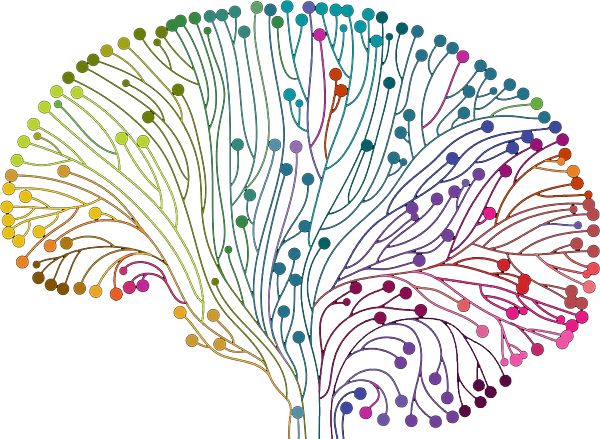
In this article, I won’t go into the scientific details on what happens in your brain and where. I’ll use common terms like “brain” and “memory”, to make this more accessible for everyone to read.
Ultimately, what a skill really is is a series of connections in your brain. As you practice a set of actions, your brain creates these connections for you.
While that may seem like great news, that’s not always the case. The brain doesn’t discern what is good and what is bad for you. That’s how bad habits get created. It just records your actions and stores it in your memory.
It’s also the reason why we think that new skills are hard to learn: we don’t make the right connections in our brains. We don’t do the right actions that make the learning of a new skill easier.
As such, I really want to put emphasis on a word I used in my first sentence above: “deliberate”.
When you deliberately focus your efforts on doing the right actions to learn something new, you direct your brain to create the connections you want it to make.
And that’s powerful.
The Essential Guide
This article won’t be focusing on any specific skill except for the skill of learning how to learn. The principles you will learn in this guide will apply to any skills you want to learn, from motor skills to intellectual skills.
It will also teach you the reason why it’s so important to diversify your skill set, especially in this century.
This guide you’re about to read is the culmination of the 100+ articles I have written on the subject, the learnings I’ve made through my own experimentations, the books I’ve read, the courses I’ve completed, the data I’ve collected from the SkillUp program, and the data I’ve collected from various expert sources.
It’s the ultimate guide to help you on your journey to skill development.
Are you pumped?
I know I am!

What is a skill?
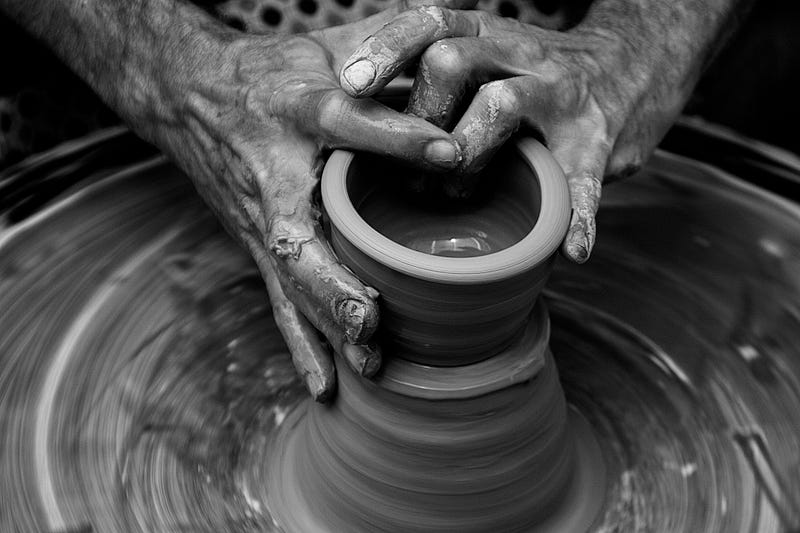
Here’s my favourite definition:
The ability to do something well
Simple and to the point. But let’s still dig deeper into it:
- “Ability” shows a certain level of proficiency.
- “to do” implies action (critical point).
- “something”, while vague, shows that anything can be considered a skill.
- “well” indicates a scale, likely 5+ on a scale of 0–10, but not necessarily 9+. Again, critical point.
Is writing a skill? You bet, but that’s not a very practical skill to aim to learn.
It turns out, skills really are just a set of sub-skills. What is the skill of writing then? It is the combination of the following skills, and then some:
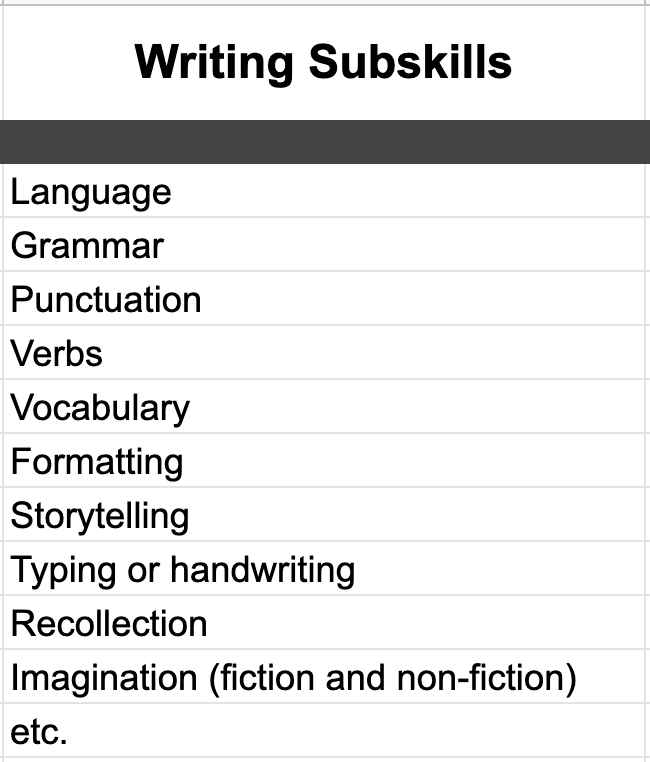
A skilled writer will have proficiency in all of the above skills and more. In writing, and in as many other skills, it helps to have knowledge in other fields to actually have content to write about.
The above list holds the key to some learning to learn principles we’ll talk about a little further below.
But do the exercise, if not now, then shortly after, of thinking of a skill and breaking it down into its smallest components. It’s the kind of exercise that will teach you the habit of thinking smaller for your bigger thoughts, ultimately motivating you to achieve your ambitious goals. Refer to the section on building SkillUp Trees to push that even further.
*Refer to Appendix A at the end for examples of skills I have learned in 15–20 hours of practice.
7 reasons for learning new skills
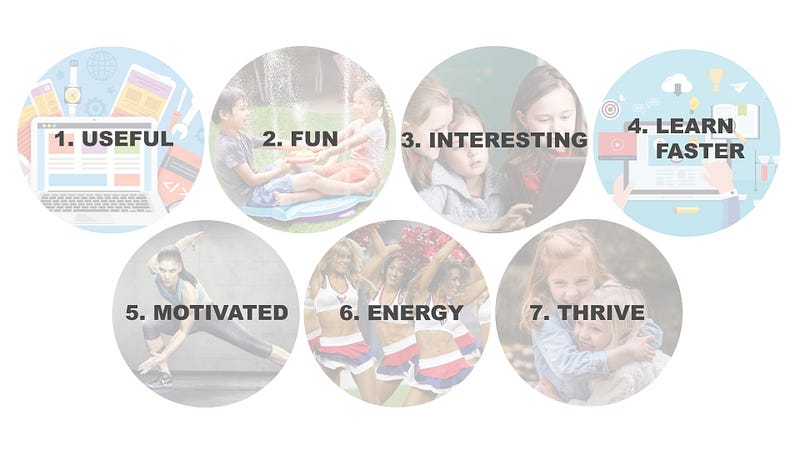
When I started my SkillUp method (learning 3 new skills every month, practicing for 30 minutes each every day), I had two reasons for wanting to learn new skills:
- Because they’re useful; and
- Because they’re fun.
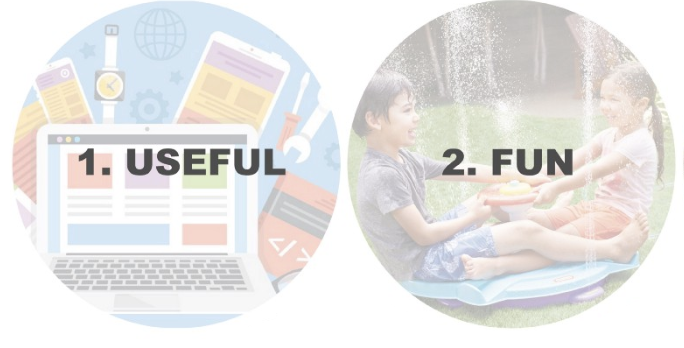
These are perfectly valid reasons and likely to be the most common ones.
What I found through learning so many skills in such a short amount of time is that there are many more benefits I hadn’t originally thought about. And the following results have been observed by Michael Simmons with his 5-hour rule, which isn’t that different from the SkillUp method.
The following list is not necessarily in order; however, all these benefits are incredibly important.
3. You will become more interesting
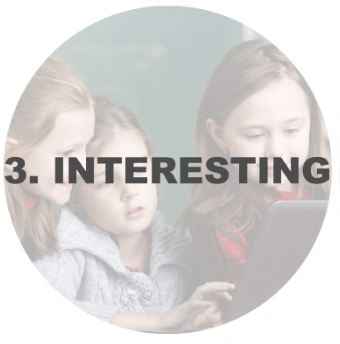
Surprisingly, I didn’t expect this at all but it makes so much sense in retrospect. When you learn a diverse set of skills, you broaden your knowledge.
No longer can I just have deep conversations with software engineers (my main profession). I’m now more relatable in many other areas. I’ve made friends because I knew about eCommerce, video editing, photography, drawing/art, Spanish conversations, music composition, web development, and more.
I used to be a shy & introverted guy who had a hard time fitting in when I was not around engineers or game developers.
How that has changed in the past 14 months!
After all, when is making deeper personal and professional connections a bad thing?
Don’t we all want deeper connections?
4. You will learn faster
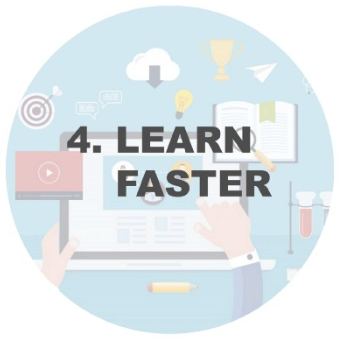
Another surprising fact for me, which again completely makes sense in hindsight, is that the more you learn, the faster you learn. I’ll go deeper into that in the next section as this is a key to learning how to learn.
Just to give an easy example: isn’t it true that once you know a romance language, it’s easier to learn the others. Being a native French speaker, it’s much easier for me to learn Spanish than it is for an English speaker, simply because it comes from the same root, Latin.
Don’t we all want to learn faster?
5. You will be more motivated
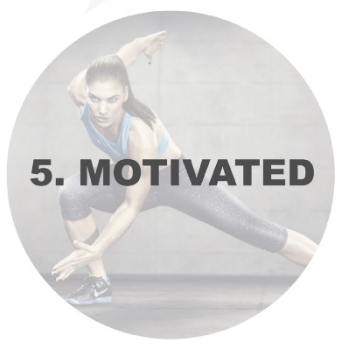
A lot of the reasoning behind this fact is that when you consistently practice a skill, inevitably, you progress.
And progress = win.
The more wins you get, the more dopamine your brain produces. Without going into details, dopamine is a key factor to life satisfaction. The more satisfied you are, the more motivated you are.
By practicing three skills every morning, on average, I get three wins right at the start of my day. Imagine how pumped I am to keep going!
Don’t we all want to be more motivated?
6. You will have more energy

All the other writers and interviewers I meet over video comment on my high energy levels. It’s simple, I’m really passionate about this stuff!
Don’t you have more energy when you do things that you like doing?
Skill development can be a lot of fun. I never thought I’d ever love Salsa Dancing, but it turns out it just might be the most fun skill I’ve ever practiced. Knowing that I have a class every morning gives me so much energy.
And when I finish it each morning and think about the progression I have made since day one, I get pumped.
If you learn a skill out of necessity, don’t neglect the fun aspect to it. If you can’t find fun in the progress, think about what it can bring afterwards. Higher salary = more activities with the family. Doesn’t that give you more energy to think about the benefits?
Don’t we all want to have more energy?
7. You will thrive more
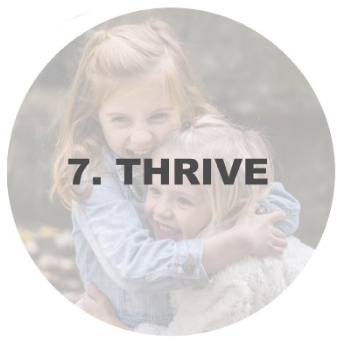
“The future belongs to those who learn more skills and combine them in creative ways.” — Robert Greene, Mastery
I love this quote and can fully attest to its truth. I’ve had so many more opportunities since I’ve become a polymath. More choices have opened up and I can truly do the things I care most about.
I now have the freedom to work from wherever, whenever.
But thriving isn’t just about freedom. Thriving has a different meaning for each individual. It means having a good balance of health, wealth, love, and happiness.
Don’t we all want to thrive?
Now that you know what a skill is, and why it matters to learn some, it’s time to look at the most important part, and the core of this guide: how you too can learn skills?
4 Steps to learn new skills in under 20 hours
A lot of people think skill learning goes like this:
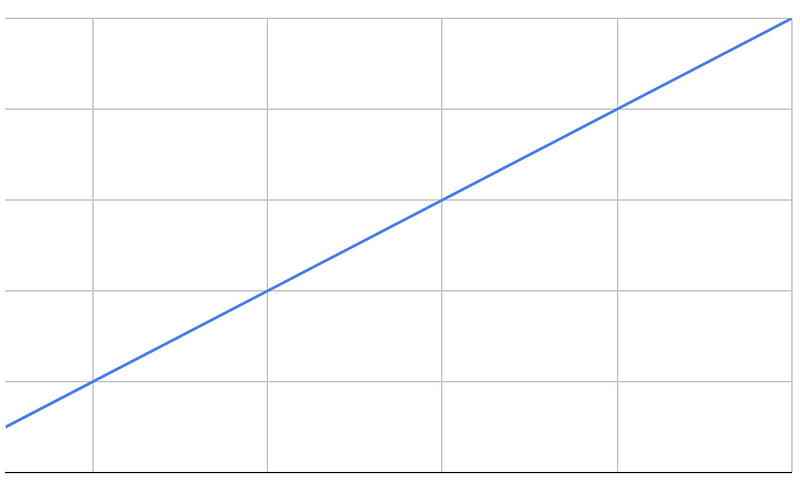
or like this:
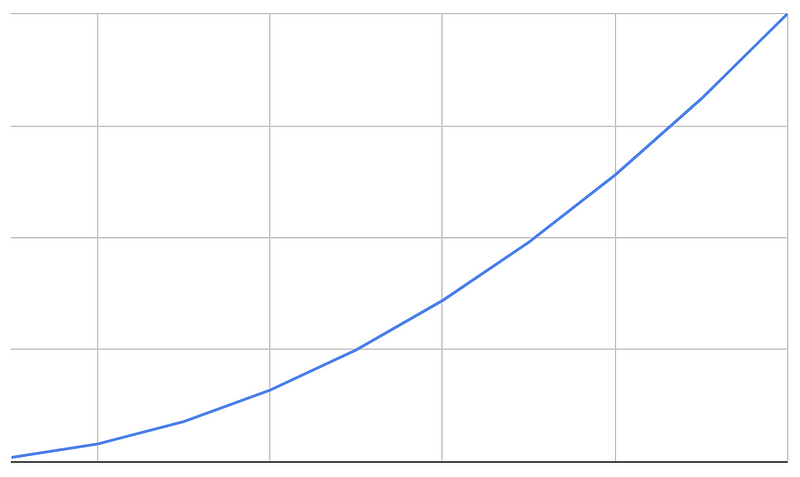
The first one is completely wrong. The second one is closer to reality and probably the most widely accepted, but it’s also wrong. This is just a perception of our learning and is actually quite demoralizing, because the reality is more like this:
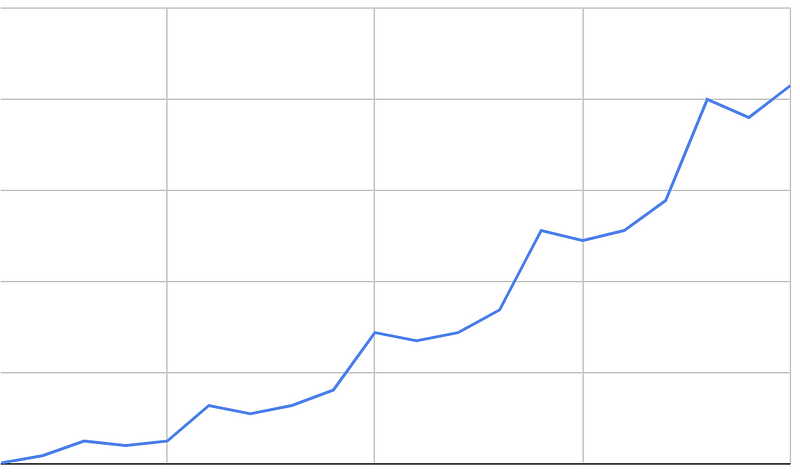
You’ll reach what people call “plateaus” on a regular basis during your skill development process. Most people stop around that time, thinking that they’ve reached their limit.
The truth is, limits are all in our heads. We can do so much more than we think we can. We see the limits pushed all the time in sports or athletics. Once someone beats a record, suddenly “everyone” can reach that “limit”, pushing it further than ever before.
Remember, everyone thought the 4-minute mile was impossible, but Roger Bannister proved them wrong, and opened the door for 26 more people to do it soon after.
Let’s now dig deeper into the steps to learn new skills in under 20 hours:
1. Think things through

When you went to school when you were younger, you were fed with answers. You were told an exact way in which you should be learning a concept. Out of school, we don’t think much on how we learn new things. We search for online videos and hope for the best.
This is NOT the best way to learn. Heck, it wasn’t even the best way in school!
The best way to learn any skill is never the best way for everyone.
The best way to learn a new skill is to figure out how the skill can be learned from your previous set of skills. More on that in section #2. Build SkillUp Trees.
Before jumping on your next course and hope that you’ll learn a skill from there, take time to craft a learning plan. Think about the following:
- What would it mean to master the skill?
- Can I break it down in small sub-skills?
- What resources can I use to learn it (notice the plurality)?
- How can I track my progress?
- How can I be deliberate and consistent in my practice?
Don’t limit yourself to these questions. Think of other questions on your own. Personalize your learning based on your strengths and weaknesses. Be realistic and scale a skill down as needed.
2. Build SkillUp Trees
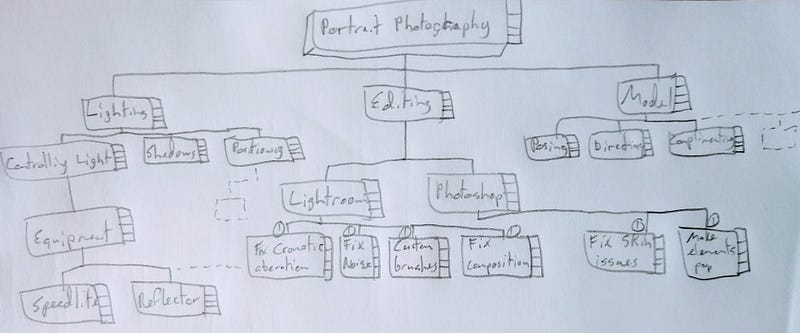
In a previous article, I went into details about the SkillUp Tree principle. It’s a powerful method to be more aware of what your current skillset is and how to move forward from there.
To learn any new skill in under 20 hours, you have to know what you’re currently capable of and analyze what you should learn next. It’s unrealistic to think that you can learn portrait photography in 15 hours if you’ve never picked up a camera before.
Let’s use this very simple skill idea to illustrate the concept:
- Walking: Sit still -> Crawl -> Stand on two feet -> Move legs while standing -> Body balance
From the Walking branch, we can branch further to the following branches:
- Running: Walking -> Leg and arm coordination -> Leg pushing (strength) -> More advanced body balance
- Jumping: Walking -> Flexing legs -> Leg pushing -> More advanced body balance
- Riding a bicycle: Walking -> Sitting on bicycle -> Leg rotation movement -> Hand guidance -> Hand and feet coordination -> Motion momentum -> etc.
It is impossible for you to learn the “Running” skill if you don’t know the “Walking” skill.
3. Follow through

Once you’re aware of what is required to learn a new skill and have a clear vision of how to learn it, it’s time to put everything into practice. I can’t stress the importance of consistency enough here. In learning anything, the more you practice, the easier it gets and the more connections your brain will make.
There is no shortcut. To learn a new skill, you can’t avoid deliberate consistent practice.
Execute your plan from Step 1 for a week. Reflect on your learnings; what went right and what went wrong. Adjust as needed. Always measure how well your practice session went. As needed, use a tool like the SkillUp Journal to record and measure your progress.
Add some accountability to help you follow through. Share your progress with your entourage or online. Join like-minded groups of skill learners and compare progress. Remember, the first time you’re going to do anything in life, you’ll be bad at it, and that’s normal. It’s the people who pick themselves up after their “failures” who learn best.
As needed, update your SkillUp Tree when progress has been made. It’s incredibly rewarding to visually see how your learning has progressed.
Whatever you do, don’t stop when it hurts. That’s when the learning truly happens.
4. Improve your memory
In this section, we’ll touch on Memory and how, as you might imagine, it plays a very important role in learning.
1. Creating long term memories
It is common knowledge that we have two memory “systems”: the short term memory (or working memory) and the long term memory. Without going too scientific on you, the short term memories happen mostly in the pre-frontal lobe:

And long-term memories are stored in the hippocampus:
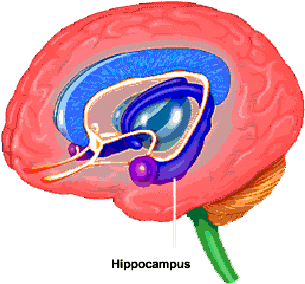
“Memories” always start as a short term memory, and in order to consider something acquired, it has to go from short term to long term memory.
But how do we make that happen? It turns out there are many ways, but here’s an image that sums it up:
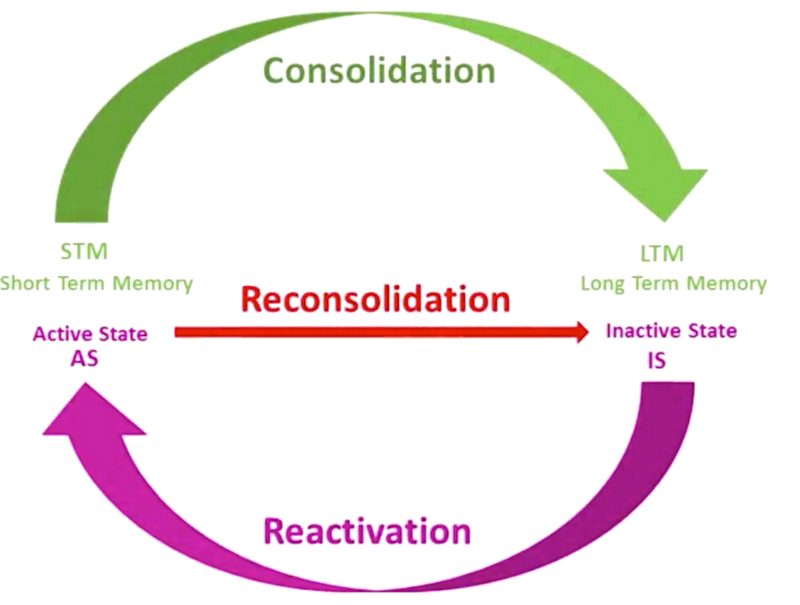
To simplify things: short term memories become long term memories by recollection. The more you expose your brain to a piece of information, the more complete the information will start to form in the hippocampus, where long term memories are stored.
Once information is stored in your long term memory, it can still change, but not as easily. More on that in section #7. Neuroplasticity.
Knowing that, it’s never a bad idea to “reactivate” a memory “frequently”. You’ve probably seen that in action when doing a skill you haven’t done for a while, like riding a bicycle, or playing a sport or an instrument.
You still remember the techniques, but you’re a little “rusty”. After a few minutes, it’s as if you never stopped doing it.
That’s what reactivation is all about.
What happens then in your brain is it resends the “newly found” information and sends it back to the long term memory to reinforce the knowledge. If you ride your bicycle the next day, you won’t be “rusty” again.
2. Remembering Techniques
Refer to the following table for seven powerful remembering techniques:

Resources:
3. Note Taking
Having trouble remembering the techniques above?
It takes a lot of practice, but once you’re good at them, you can greatly increase you ability to memorize things.
An easy technique, that everyone knows about, but not enough people apply is note taking when reading or watching videos. And by note taking, I don’t mean highlighting. In fact, according to Dr. Barbara Oakley, highlighting can be detrimental to your learning.
Have you noticed when you take notes of things to reference later, you tend to actually remember it without ever needing to reference it?
Without going too deep into the scientific details of why that is, you are making a conscious effort to recall it by writing it down. As mentioned above, it uses a few of your senses to create the memory.
Want to greatly improve your memory in a short period of time?
Take notes when you read and watch videos as it greatly improves your recollection by handwriting your notes.
4. Recollection
This is the most important aspect of creating long term memories and something almost everyone does wrong.
When and where should you revisit material you’re trying to remember?
Where
It turns out that most of us don’t do it the right way. Most people “study” material from the same exact environment; in the living room or in the study for example. The problem is that the brain stores the setting of the learning as a reference point to recall a memory.
Have you noticed how, as a student, you had a hard time recalling information during an exam?
One of the possible causes of this is you only studied in one environment. Successful students often diversify their environments of study: in their bedroom, their living room, at a café with other students, in the classroom, at the library, with music, without music, in a cold room, in a hot room, etc.
The more you vary your environment when trying to learn a new concept, the more deeper connections you’ll make in your brain, creating stronger long term memories.
If you practice rock-climbing / bouldering at the same gym, at the same time with the same people, do you think you’ll learn better than someone who varies the gym they go to, the people they go with, the indoor/outdoor settings, etc?
No, right?
The best athletes train for different scenarios. Same with the military. So whatever it is you are trying to learn, make it your mission to vary your study environment!
When
Now, let’s attack the “When”.
Have you ever revisited the same material over the course of a few days, hoping that it would “stick”, just to realize it doesn’t get to your head?
Right. Your brain doesn’t work that way.
Have you also noticed how when you study just before an exam, your recollection is pretty good, but a few days later, you’ve basically forgotten everything you have “learned”?
Right. Your brain doesn’t work that way either.
In both scenarios, you’ve learned nothing, or close to it.
So when should we practice recollection then?
Spaced Repetition is what you’re looking for. Here’s an image that summarizes it really well:

If you have used language learning apps like Duolingo or Memrise, you may have noticed how they’re doing that for you behind the scenes. It’s no surprise then that these two apps have shown some of the best results for learning a new language.
If you’re learning a new guitar chord today, recall it 24 hours later, then 7 days later, then a month later, then a year later. You’ll “forever” remember it.
It works the same for every skill you want to learn. Never “fire and forget”. Put it in your calendar.
5. Forgetting
Forgetting, it turns out, is one of the most important aspects to learning. There are at least two reasons why forgetting or unlearning is useful.
First, during your learning phase of anything, you’re unsure of the information you’re digesting. You accumulate information without knowing how to make sense of it. This knowledge then becomes useless once you make the right connections. If you don’t unlearn it, your brain will refer to it again and confuse what is “true” and what isn’t.
Second, forgetting your experience is essential to being able to transfer skills from one job to another.
“Our work shows that an unstable memory is a key component of the mechanism for learning transfer. An unstable memory prevents learning from being rigidly linked to one task; instead, it allows learning to be applied flexibly.” — Professor Edwin Robertson
In summary, forgetting the context in which you learned something helps apply the learnings in a variety of other concepts.
6. Sleep

Connections made in your brain happen subconsciously, that is, when you’re not actively practicing what you learn. While activities like jogging, meditating, and taking a shower help with the assimilation of information, sleeping is shown to provide even better results.
It is not a coincidence we’re all familiar with the saying: “Let me sleep on this.”
During sleep, our body rejects bad toxins accumulated and subconsciously “work on” the material we have fed it before going to bed. If there’s a concept you’d really like to grasp but can’t seem to during the day, try before going to bed. Chances are, you’ll have a deeper understanding the next day.
That being said, during the day, if you’re too tired to make sense of a problem you’re trying to solve, power naps are a great way to achieve the results mentioned above.
Einstein, Dali, Edison, and many others used this technique to get to their “Aha!” moments.

Moreover, a well-rested body and mind is more receptive to the different stimuli around, making easier to make sense of the information coming through your brain.
7. Neuroplasticity
Neuroplasticity, also called brain plasticity, is the process in which your brain’s neural synapses and pathways are altered as an effect of environmental, behavioral, and neural changes. — study.com
Neuroplasticity is a way for your brain to fine-tune itself for efficiency.
For example, if someone suffers a brain injury, neuroplasticity allows the brain to ‘rewire’ itself in order to restore, or maximize brain functioning by rebuilding neural circuits and allowing an uninjured part of the brain to take over the damaged part.
To better understand neuroplasticity, refer to the following inforgraphics:
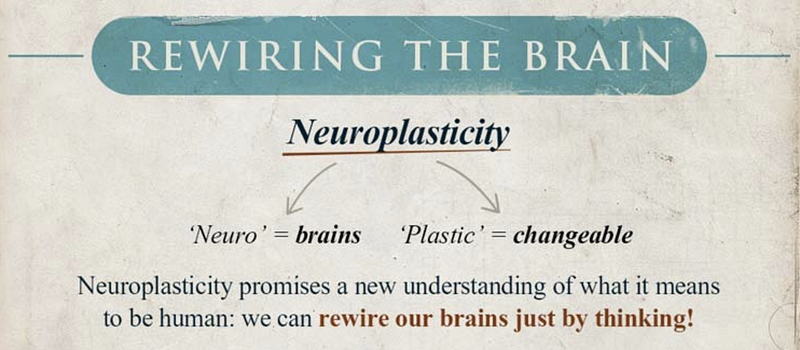


Should I aim for mastery?

One of the biggest criticism I get about the SkillUp method is about mastery.
“Jack of all trades, master of none.”
The jack of all trades myth
I disagree that it’s such a bad thing. It’s also not necessarily true that a polymath is a master of none. A polymath, in fact, is a master of some.
While it’s true that with 15 hours of deliberate practice, you won’t master anything (unless you’re the greatest genius to ever live — and who will ever live).
What some people fail to realize is that the SkillUp method is an ongoing process.
Remember when I said that the more you learn, the faster you learn?
As we previously learned, it’s true because of the mental chunks we create in our brains that allow us to make connections faster thanks to our growing collection of chunks.
Knowing this, the more you learn, the faster it is to master something. Not-so-strangely enough then, learning to play the piano, the guitar, the violin and the tuba at the same time actually improves your mastery of each of those individually.
Given all these facts, over the period of a few years, you wouldn’t be a master of none but rather a master of some. And that mastery of some is inevitably, based on science, going to be faster if you learn the skills concurrently as opposed to separately.
How do I know I’ve learned enough to move on to another skill?
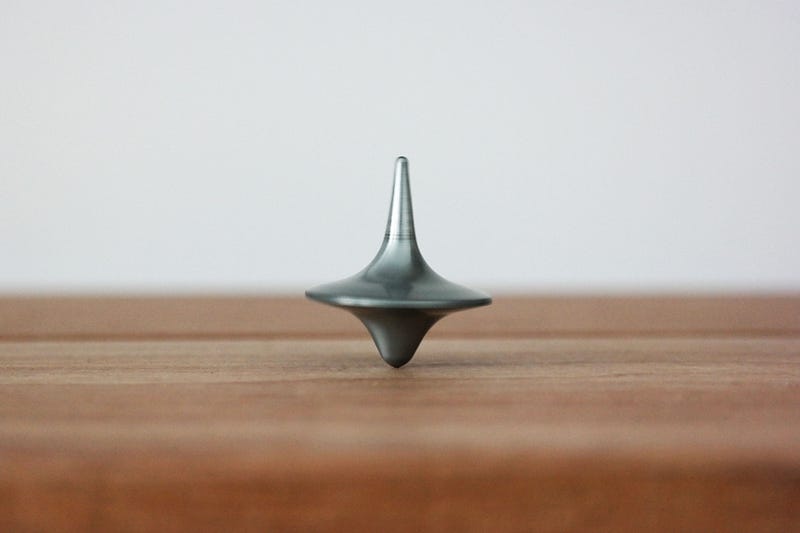
That was a great question I got from SkillUp member, Joshua Galinato.
Where is the balance between under-learning and over-learning?
In truth, it really depends on one’s intention. If it’s for a profession, then I’d argue you should never stop learning and aim to go from good to great.
When setting out to learn a new skill, be specific. Learn subsets of skills. Or subsets of subsets. Let’s say mini-skills or bite-sized skills. The only way to know when to stop is to know what it means to have mastered or close-to-mastered the mini-skill.
I personally aim for mini-skills and give myself about a month to be good in it, practicing 30 minutes a day. Basically, the core of The SkillUp method. But there’s really no wrong answer here. If a mini-skill takes 5 hours, then so be it!
While I rarely do direct follow-ups of the skills I have learned during the given month, I always end up using what I’ve learned one way or another. When a few months later I want to learn a new skill that uses a previously learned mini-skill, my learning drastically accelerates.
The SkillUp method really has three different choices when it comes to the end of your 15 hours practice:
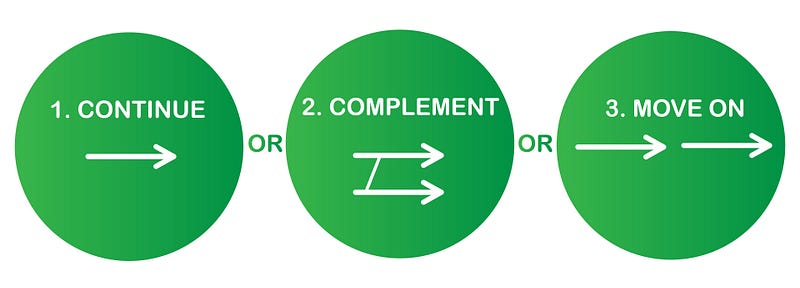
- Continue Learning
You can always improve anything you are doing. Take advantage of the momentum and accelerate your learning even more. Try to become a “master” at it.
For example, Erik Hamre always pushes to 100 hours and becomes really good at each skill he learns.
2. Find a complementary skill; or
Take advantage of the momentum to learn something complementary. Focus on a more specific subset of a particular skill, or a different branch. Learn a new language tense or vocabulary, learn new Photoshop techniques, learn new Machine Learning principles, etc.
3. Do something else entirely.
Some say that to find success, you must focus on a particular set of skills. I personally challenge this “rule”. I like diversity. I like to be adaptable. I like to relate to other people’s stories. I feel like I’m a better person for it.
Doing something else entirely breaks the momentum for that skill, but the success you acquired from learning previous skills should carry over and keep you motivated. Your brain will now accept that you can indeed learn things you never knew you could.
Where do I take it from there?

Critical question!
Too many people read articles or books, follow online course, watch YouTube videos, only to do nothing about it. Only 7% of people who start an online course finish it. That’s a lot of missed opportunities.
Let me do just a quick re-iteration why skill development matters:

You brain doesn’t make the connections if you don’t practice. I suggest you bookmark the guide and refer to it frequently. It’s a lot to swallow on a single read and I don’t expect you to remember it all right away!
Today or this week, but no later, list the skills you’d like to learn. Find resources on the subject. Create a model in your mind on what results you expect out of 15 hours of practice. Be realistic. Work backwards from your envisioned results. What are the baby steps required to get there? Refine and readjust as you go.
*Refer to Appendix B for tons of resources on learning both important and coveted skills.
For complicated skills, I sometimes spend up to 8 hours planning it out. Remember the word “deliberate”. Your planning won’t be perfect but remember, it’s all about experimenting to see what works best for you.
Another key to following through on anything you do in life is having accountability. Join groups of like-minded people that will help you on your journey.

Conclusion
There’s really too much content here to make a short summary, but let me stress the following:
With a good system in place, learning new skills is not as hard as it seems.Learning varied skills will, in the near future, be the only way to thrive. People who start now will not only future-proof themselves, but also have the upper hand.
So what are you waiting for?
It’s time to skill up your life!
You can do this!
Thanks for reading, sharing, and following! 🙂
Appendix A: Examples of skills to learn in 15–20 hours
The following is a list of some of the skills I’ve learned in the past 14 months. Feel free to use these as examples of things you can accomplish in 15 hours of deliberate practice:
Here’s me going from zero to something in 18 hours of Salsa dancing:
